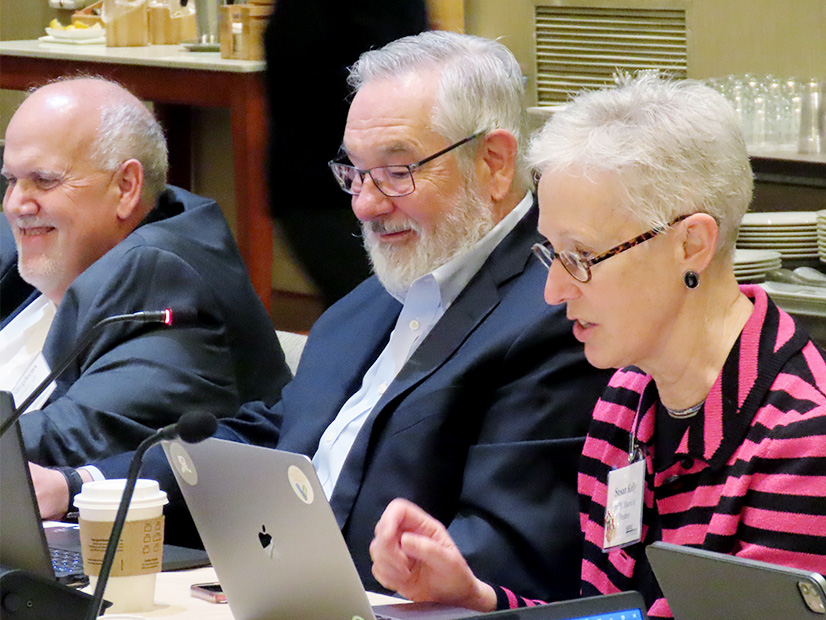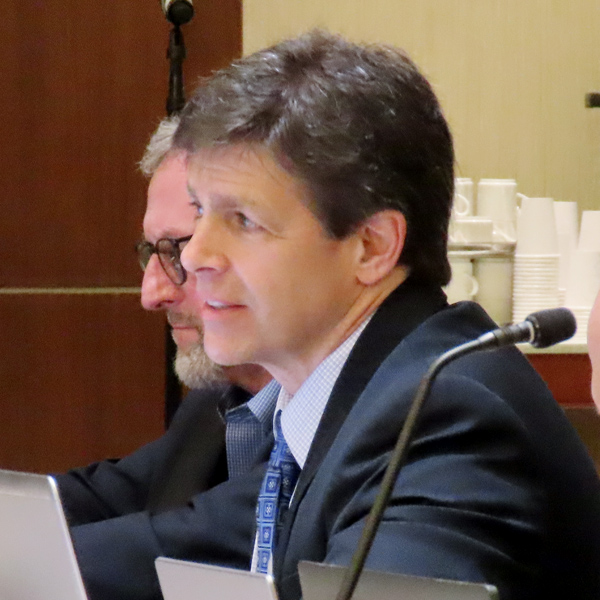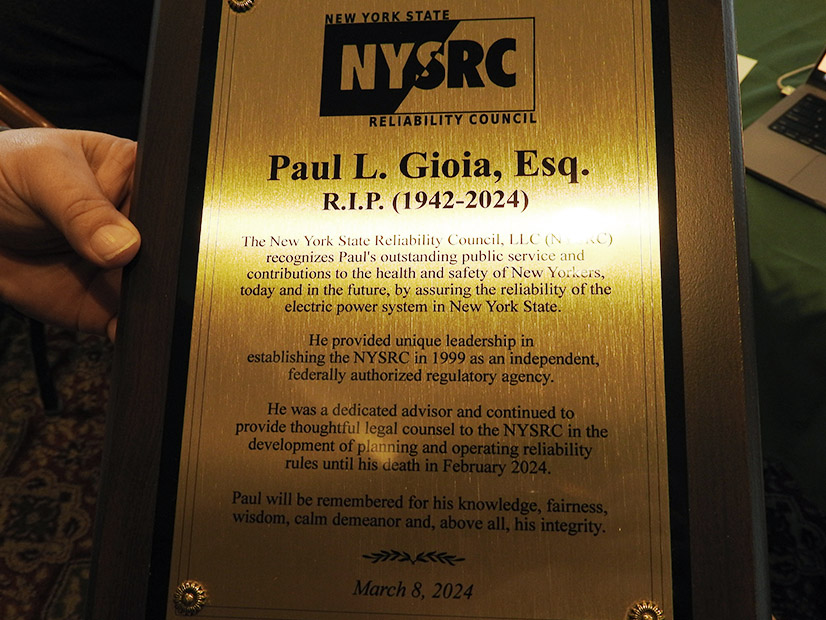Kelly Praises Committee as ‘Kitchen’ of ERO
SAN DIEGO — In her first address to NERC’s Reliability and Security Technical Committee since being named the committee’s board liaison last month, NERC Trustee Sue Kelly asked attendees at the committee’s first meeting of 2024 in San Diego to “bear with me” as she adjusts to her new role.
Kelly, who previously served as the Board of Trustees’ liaison to the Standards Committee, likened the RSTC to the “kitchen” and the SC to the “front of the standards development house,” meaning the work of both committees is vital to maintaining the ERO’s reputation for “technical excellence.”
“In many respects, you are NERC’s brain trust,” Kelly said. “You do the complicated but vital work that underpins NERC’s standards, guidance, white papers [and] assessments. The reliability issues we are dealing with now are incredibly complex, and we need all the gray matter we can get to apply to these challenges. So, we on the board very much appreciate the efforts that all of you dedicate to this work.”
The RSTC’s next meeting will take place June 11-12 at Amazon’s headquarters in Seattle, and will be a joint gathering with the SC. Committee members will participate in person, while all others attend online. Its Sept. 11-12 meeting at the headquarters of Hydro-Québec in Montreal will be hybrid as well, and the final meeting of the year, Dec. 11-12, will be fully virtual.
IBR, DER SARs to Receive Comments
RSTC members endorsed or accepted multiple draft standard authorization requests, reliability guidelines and white papers during their two-day meeting.
The first SAR was brought to the committee by NERC’s Inverter-based Resource Performance Subcommittee (IRPS). NERC Senior Engineer Alex Shattuck told attendees the IRPS developed the SAR in response to FERC’s Order 901, issued in October, which directed NERC to develop rules addressing IBR data-sharing, model validation, planning and operational studies, and performance standards. (See FERC Orders Reliability Rules for Inverter-Based Resources.)
The SAR would authorize NERC to update reliability standards FAC-001-4 (Facility interconnection requirements) and FAC-002-4 (Facility interconnection studies) to ensure that transmission operators, balancing authorities and reliability coordinators that identify IBR performance issues can work on corrective actions with generator owners. Members voted to accept the draft SAR and post it for a 30-day public comment period, to begin March 18.
NERC’s System Planning Impacts from Distributed Energy Resources Working Group (SPIDERWG) brought forward the other SAR, intended to clarify the definitions of operational planning analysis (OPA) and real-time assessment (RTA) in the ERO’s glossary of terms to “explicitly include aggregate DERs as a component of both” definitions.
SPIDERWG Chair Shayan Rizvi explained the goal of the SAR was to bring “enhanced clarity to situational awareness and [reduce] operational risk,” noting that “DERs have contributed to grid disturbance events” and that clarifying the definition would help grid operators identify and react more efficiently in emergency situations. Members voted to approve this SAR for a public comment period, also to start March 18.
SPIDERWG, Other Groups Submit Papers
The SPIDERWG also brought forward a white paper on coordination strategies between transmission and distribution entities and a reliability guideline to assist grid planners with needed studies of DERs’ impact on reliability. RSTC members accepted the white paper and approved posting the guideline for a 45-day comment period.
NERC’s Probabilistic Assessment Working Group also brought a paper intended to help grid planners understand the reliability risks posed by extreme weather events, while the System Protection and Control Working Group submitted its paper on transmission relay loadability. The RSTC accepted both papers and agreed to solicit reviewers for two more papers from the SPCWG: one on evaluating IBRs’ compliance with existing standards, the other on transmission system phase backup protection.


